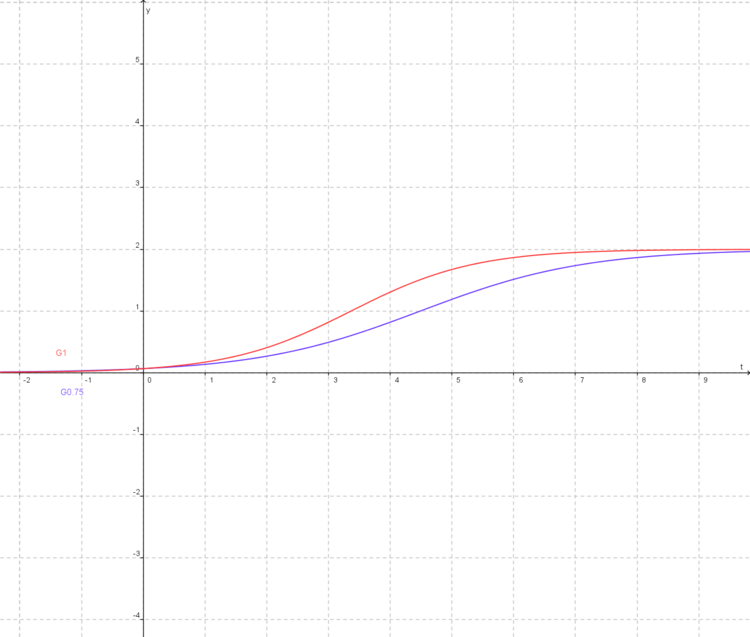Lösung b): Unterschied zwischen den Versionen
Aus RMG-Wiki
K (→Beweis für Wendepunkt:) |
(→Suche nach dem Wendepunkt:) |
||
| Zeile 30: | Zeile 30: | ||
<math>f''_{a}(t) = 58\cdot a^{2} \cdot \frac {29\cdot e^{at} - e^{2at}}{(e^{at}+29)^{3}} = 0 </math> | <math>f''_{a}(t) = 58\cdot a^{2} \cdot \frac {29\cdot e^{at} - e^{2at}}{(e^{at}+29)^{3}} = 0 </math> | ||
| − | <math>58\cdot a^{2} (29\cdot e^{at} - e^{2at}) = 0</math> | + | <math>58\cdot a^{2} (29\cdot e^{at} - e^{2at}) = 0</math> <math>| : 58\cdot a^{2} \Rightarrow (a \neq 0)</math> |
| − | + | <math>(29\cdot e^{at} - e^{2at}) = 0</math> <math>| + e^{2at}\;</math> | |
| − | <math>29 \cdot e^{at} = e^{2at}</math> | + | <math>29 \cdot e^{at} = e^{2at}</math> <math>| ln\;</math> |
| − | + | <math>ln(29\cdot e^{at}) = ln(e^{2at})</math> | |
| − | + | <math>ln(29) + ln(e^{at}) = ln(e^{2at})\;</math> <math>| - ln(e^{at})\;</math> | |
| − | + | <math>ln(29) = ln(e^{2at}) - ln(e^{at})\;</math> | |
| − | + | <math>ln(29) = 2\cdot a\cdot t \cdot ln(e) - a\cdot t\cdot ln(e)</math> (ln(e)=1) | |
| − | + | <math>ln(29) = 2\cdot a\cdot t - a\cdot t</math> | |
| − | + | <math>ln(29) = a\cdot t</math> | |
| − | + | <math>t = \frac {ln29} {a}</math> | |
===<u>Beweis für Wendepunkt:</u>=== | ===<u>Beweis für Wendepunkt:</u>=== | ||
Version vom 16. Januar 2010, 10:16 Uhr
,


Untersuchen sie die Funktionen fa auf Nullstellen und lokale Extremstellen
Suche nach Nullstellen:


 keine Nullstellen, da die e-Fkt. nie 0 wird und somit der Ausdruck
keine Nullstellen, da die e-Fkt. nie 0 wird und somit der Ausdruck  ebenfalls nie 0 werden kann
ebenfalls nie 0 werden kann
Suche nach Extremstellen:

 keine Extremstellen, da die e-Fkt. nie 0 wird und somit der Ausdruck
keine Extremstellen, da die e-Fkt. nie 0 wird und somit der Ausdruck  ebenfalls nie 0 werden kann
ebenfalls nie 0 werden kann
Jeder Graph Ga bestitzt genau einen Wendepunkt Wa. Zeigen sie, dass die Wendepunkte Wa auf einer parallelen zur t-Achse liegen
Die 2. Ableitung:


Suche nach dem Wendepunkt:











(ln(e)=1)



Beweis für Wendepunkt:
1. Möglichkeit: Die H-Methode
Man nähert sich dem möglichen Wendepunkt mit Hilfe eines Grenzwertes an und versucht herauszufinden, ob ein Vorzeichenwechsel am Wendepunkt stattfindet. Falls es einen Vorzeichenwechsel geben sollte, ist dies der eindeutige Beweis für einen Wendepunkt an dieser Stelle.



